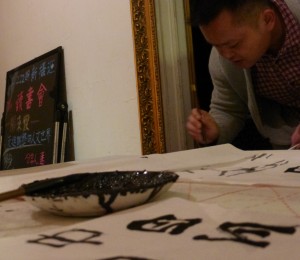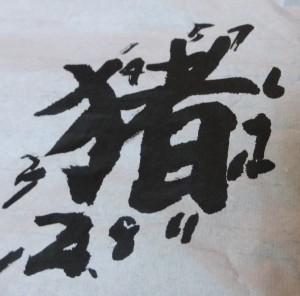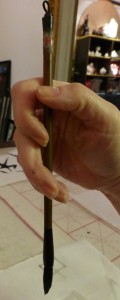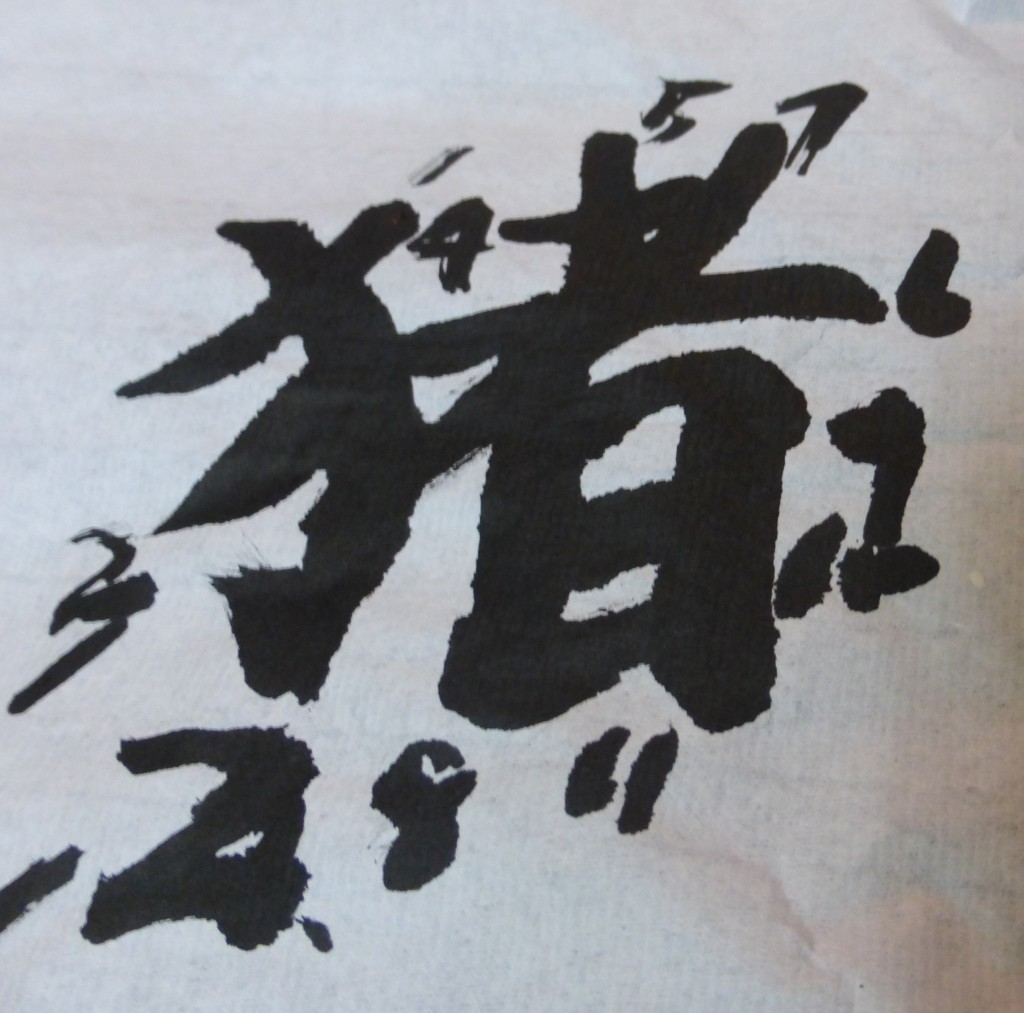
If I had been a student in the Chinese school system, I would have utterly failed my penmanship course. My English script is already a close comparison to, as my dad would say, chicken scratch, and the Chinese style is more akin to drawing. Chinese calligraphy is an art form in and of itself, and I, severely lacking in that department, made a mess of my attempt at creating the beautiful characters.
A short history of Chinese calligraphy
The Chinese writing system is an ancient one, only behind Sumerian cuneiform and Egyptian hieroglyphics. The characters are pictographs of what they represent, and, therefore, there are no letters as we know them in Chinese writing. The word for writing in Chinese, shu, literally translates to “to resemble.”
According to Peter Hessler’s Oracle Bones, a legend holds that the characters were created by a demigod as he observed animals and the tracks they left. As he witnessed these recognizable prints each species made, the demigod began to create a system that copied images in nature. Even today, if you look in the right way, representations can be seen in the shape of Chinese characters. For example, the traditional and modern Chinese character for “person” is “人.” In this character you can see a resemblance to the legs of a person, a stick figure with no head or arms.

Hessler goes on to explain how once in ancient times the characters reached a point where they couldn’t explain abstract concepts, people turned to sounds to create the representations. Characters that already represented sounds were then combined to create these ideas in writing. Today, there are more than 10,000 characters in the common usage, and accounts claim more than 100,000 in ancient text.
Though, in my opinion, a difficult language to master and an even more complex writing system to learn, the Chinese characters embody the significance of the Chinese culture. While Westerners have led a push for a simpler system with an alphabet, resistance to this idea is understandable. The system, however, was reformed under communist leader Mao Zedong, being granted legal status in 1941. Today, most common writings, such as schoolwork, are completed in this simplified format. As a result, only those who have studied the form can read and write in the traditional system. Reform also saw the characters turned into a Latin-based format, so you will also see Chinese written in English characters in some instances, such as street signs.
Chinese calligraphy as an art form

As part of an InterNations Chinese Art & Culture seminar, I recently attended a class in Chinese calligraphy taught by a master calligrapher. Watching the flow of his brush, how his hand so delicately moved, was captivating. His grace in designing the characters was truly an artistic expression formed on paper. And, then there was me with blobs and splatters of ink all over the page. I think I might have just offended the teacher as he looked away from the mess I was making of his craft.
Chinese calligraphy is known as art form throughout the world. You see it decorating canvases, vases and buildings. In the West, much to the bemusement of the Chinese, we even have characters tattooed on us that we believe represent an important value. If you want to highly insult someone in China, do a sloppy job of writing his name in Chinese, especially slanting the top half of the pictograph.
There are only three colors in Chinese calligraphy: the white of the paper, the black of the ink, and the red used to make the stamps. There are soft and hard brushes made from sheep wool, wolf, fox or tiger fur, horse hair, and even the hair of a human baby. Softer brushes are used to make thick lines, and the harder brushes make the delicate thin strokes.
There is a systematic process to drawing each character. First, the calligrapher must hold the brush in a particular way. Using a paint-by-the-number system, each stroke must then be made in a certain sequence. The strokes must also be of precise lengths and thicknesses. The entire method is extremely meticulous.
Chinese calligraphy for you
Is there a character in Chinese you would like to know how to create? Let me know in the comments by Dec. 13, and I will try to get you the instructions to do so.
-Monica


I’d like to see the character for music. Another excellent article, Monica. I learn so much each time I read your blog.
Kelly, the Chinese character for music is 音乐. The character is written from top to bottom, left to right. I’m working with a friend to try to get a video or a photo with the numbering system to post soon. Thanks for reading and commenting!
Kelly, here’s a video that shows you how to draw the character for music provided by our friend Cathy Hou. Hope you find it useful. http://youtu.be/ywYjUMneShY